
Khajuraho, the splendid temples of love
 Khajuraho, a small village in Madhya Pradesh, is reputed for its sumptuous temples, built under the Chandela dynasty and listed as Unesco World Heritage. They are famous all over the world for their relief sculptures of the “art of love”.
Khajuraho, a small village in Madhya Pradesh, is reputed for its sumptuous temples, built under the Chandela dynasty and listed as Unesco World Heritage. They are famous all over the world for their relief sculptures of the “art of love”.

Khajuraho boasts without a doubt one of the most beautiful ancient site in India. The Chandelas, Rajput rulers of central India, built these splendid monuments over a period stretching from the 10th to the 11th centuries. There were originally 85 but only 22 are still standing. They included both Hindu and Jain temples.
History

Khajuraho temples were in active use through the end of 12th century. This changed in the 13th century, after the army of Delhi Sultanate, under the command of the Muslim Sultan Qutb-ud-din Aibak, attacked and seized the Chandela kingdom.
From the 13th century to the 18th century, the region was dominated by various Muslim dynasties. During this period, a good number of Hindu monuments were desecrated. It is fortunate that those of Khajuraho were spared. Historians believe that the site’s isolation protected it from destruction.

The temples were gradually forgotten and, over the centuries, nature took back its rights, engulfing the village.
It is an English surveyor, T.S. Burt, who will rediscover the various sites of Khajuraho in 1840. Renovation work was undertaken in the 20th century and lasted about 15 years.
The temples
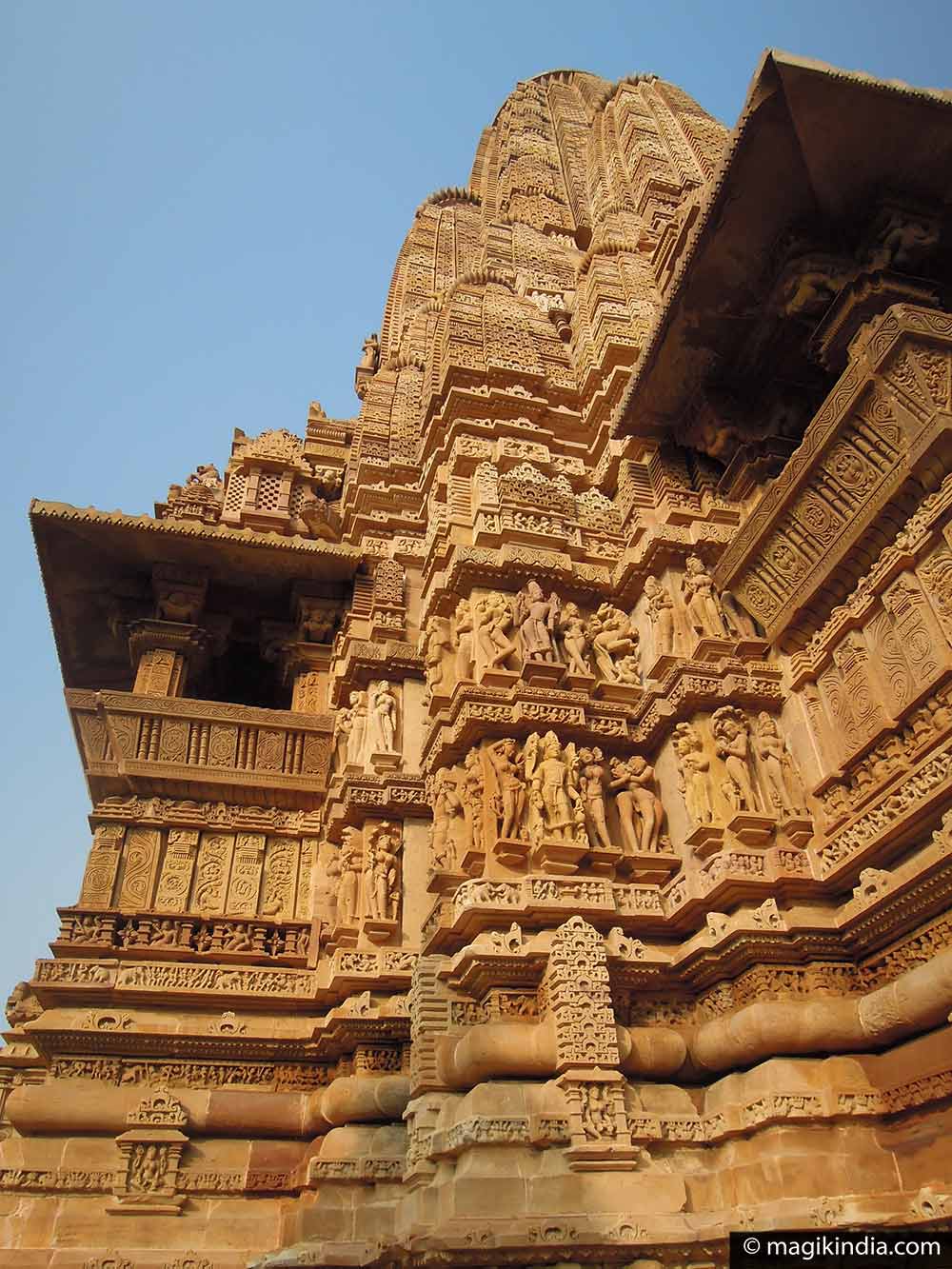
There are three groups of temples, West, East and South.
The most importants group is the West group. Among them, that of Kandariya Mahadeva, dedicated to Shiva, is the most remarkable.
Built in the mid-10th century, its main tower is made up of small urushringas or secondary towers that rest on the main one.
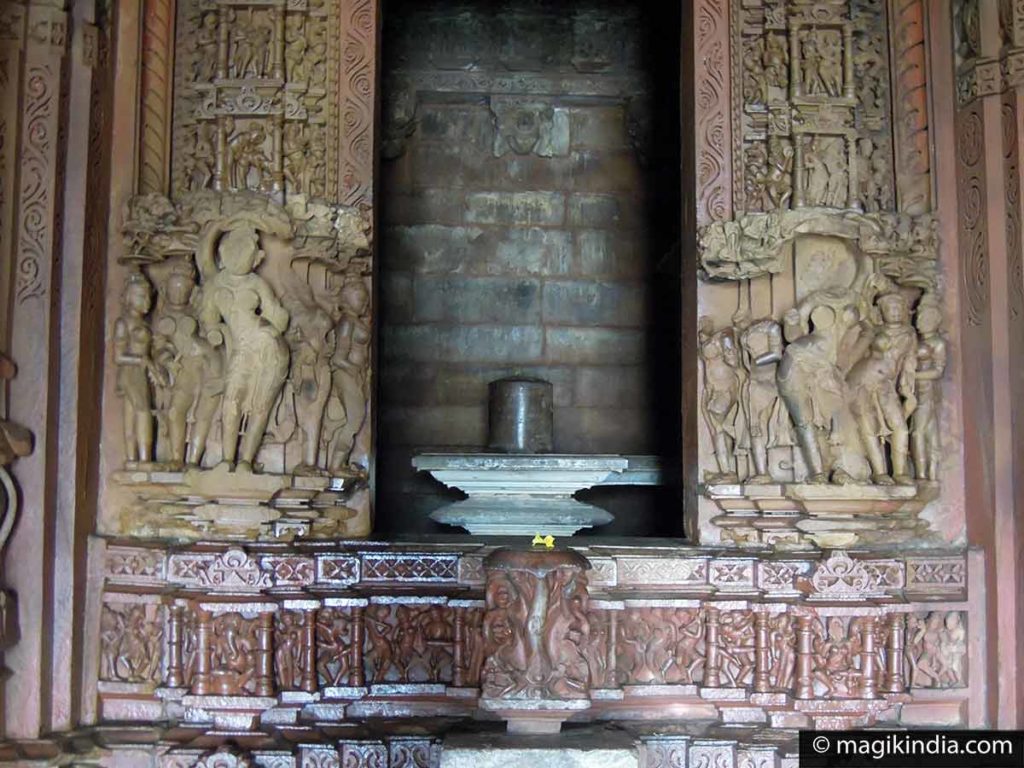
However, the major attraction of the Kandariya Mahadev temple is its numerous erotic frescoes (see below) which, far from being vulgar, are real architectural masterpieces reflecting the open-mindedness of the time.

Right next to it, the Lakshmana temple, resting on a large platform, is the only one on the site to be surrounded by several small shrines at each corner.
One of them is the Vahara temple. Vahara is the avatar of Vishnu in the form of a boar. The body of the animal god is entirely adorned with figurines from the Hindu pantheon.

The east and South groups also contain some major temples such as those dedicated to Parshvanath, Adinath, Shantinath and Chaturbhuja.
Parshvanatha Temple is the largest of the Jain temples in Khajuraho. It presents beautiful sculptures of couples, dancers, musicians and also of Hindu gods, marking the religious tolerance.

To the right of the temple of Parshvanath is that of Adinath, smaller, but equally beautifully carved, with a black schist statue representing the first of the twenty-four masters of Jainism.

In the same complex of Jain temples, a white edifice with several towers catches our attention. It is the temple of Shanti Nath. If the exterior seems recent, the shrine nevertheless houses a statue of Adinath, 4.50 m high, which dates from the 11th century.

The erotic sculptures of Khajuraho
All the temples of Khajuraho have a rich display of intricately carved statues. The arts cover numerous aspects of human life and values considered important in Hindu pantheon.

Khajuraho is however known for another type of sculpture, those depicting scenes from the kamasutra, now famous all over the world.
Actually, these constitute only a tiny proportion of the carved decorations and the temples cannot be reduced to that.
Also, there are sculptures of this type in many other places, for example the Sun Temples in Konark and Modhera, though none can rival those at Khajuraho.

Why erotic sculptures in spiritual places?

Several theories have been put forward to explain the presence of these carvings on some Hindu temples.
The spiritual theory, states that erotic figures remind us that sexual energy is to be transcended to reach a state of spiritual awakening. Man must focus his attention on his inner world rather than remaining dependent on his five senses, which drive him to endlessly strive for material things.
The tantric explanation is that sex in all its forms is sacred. It reproduces the ultimate act of creation, the union of male and female. Sex is the cause of the creation and manifestation of the universe.
Some also say that these temples had educational value. While talking about sex might be taboo, the art of lovemaking can be learnt by studying these sculptures.
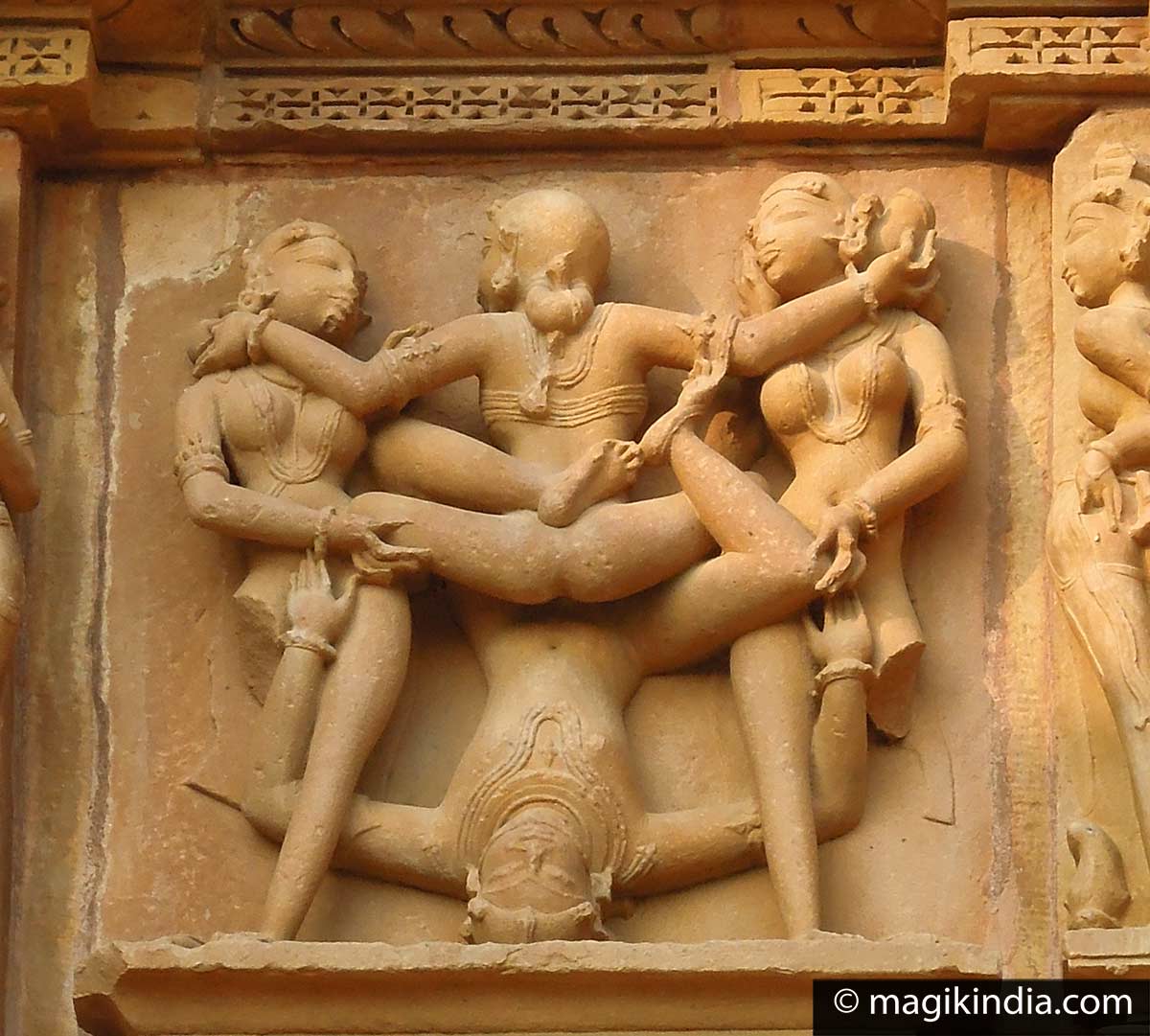
Khajuraho Dance festival
Organised by the Madhya Pradesh Kala Parishad, the Khajuraho dance festival is a one-week-long festival of classical dances held annually in February against the spectacular backdrop of the magnificently lit Khajuraho temples.
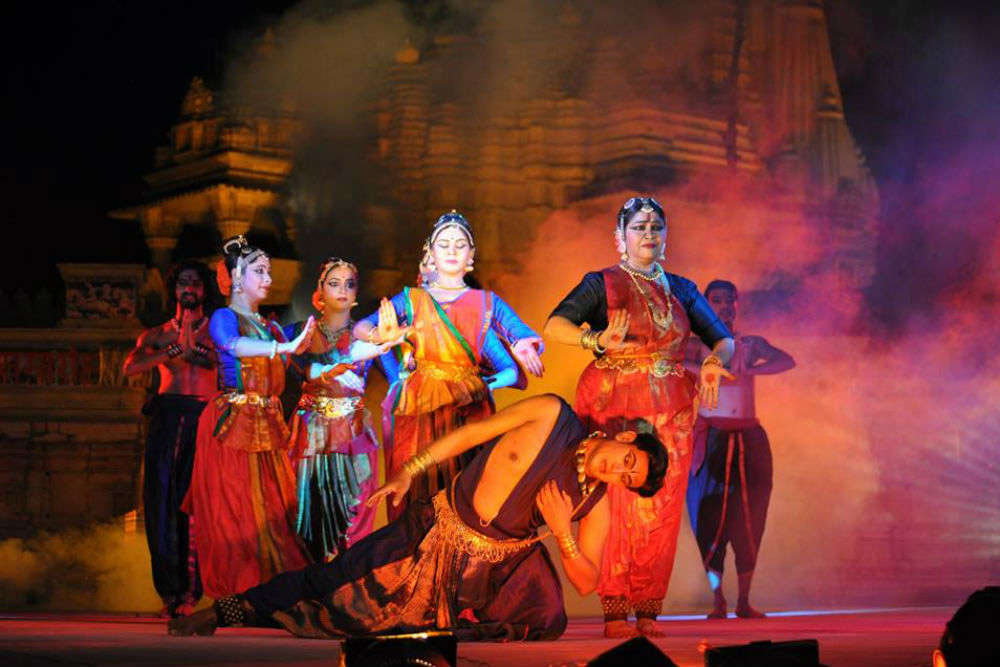
This cultural festival highlights the richness of the various Indian classical dance styles such as Kathak, Bharathanatyam, Odissi, Kuchipudi, Manipuri and Kathakali with performances of some of the best exponents in the field. Modern Indian dance has also been added recently. The dances are performed in an open-air auditorium, usually in front of the Chitragupta Temple dedicated to Surya (the Sun God) and the Vishwanatha Temple dedicated to Lord Shiva, belonging to the western group.





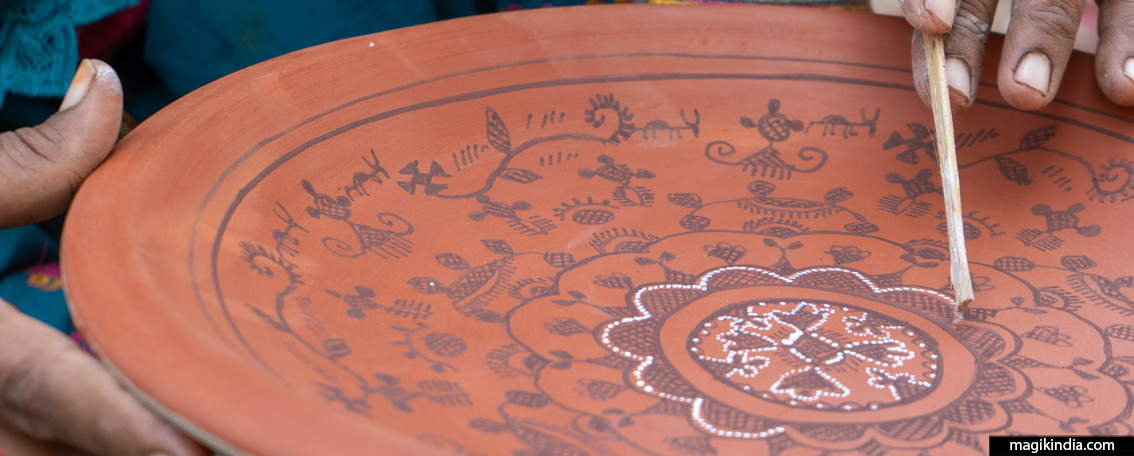

Absolutely stunning! The Lakshmana Temple at Khajuraho is a true masterpiece of architecture and artistry. The intricate carvings and the sheer grandeur of the temple leave me in awe. It’s incredible to think about the history and craftsmanship behind such an ancient structure. A must-visit for anyone exploring India’s rich cultural heritage !
thanks for your message, regards, Mathini